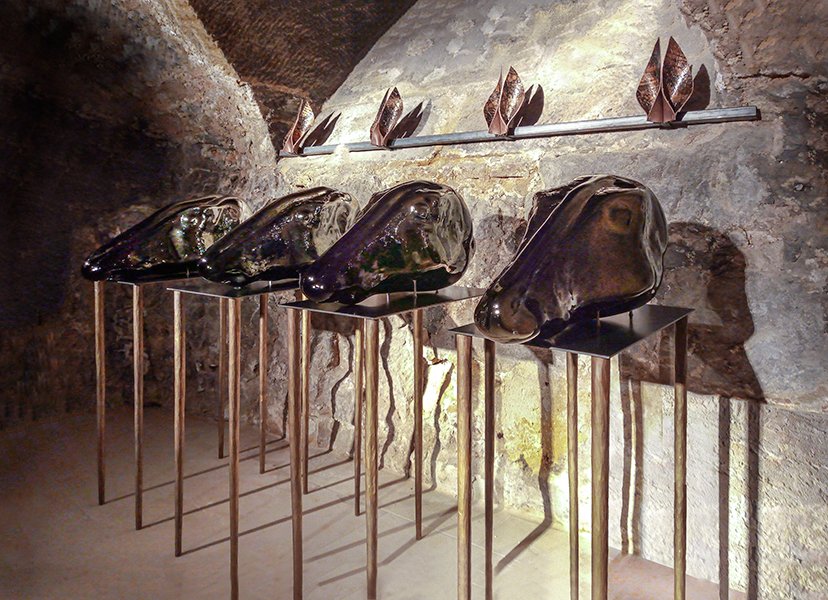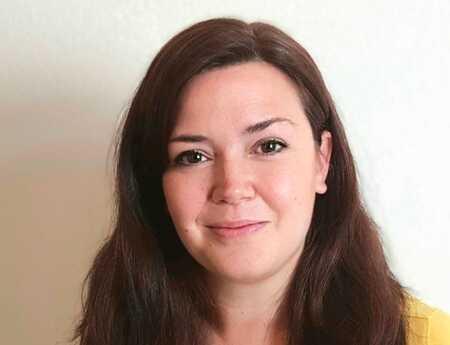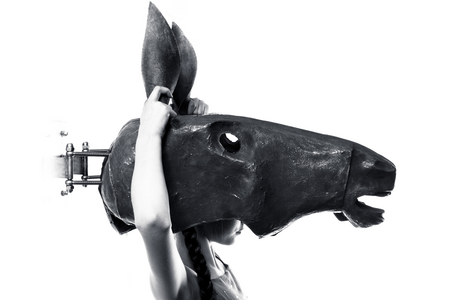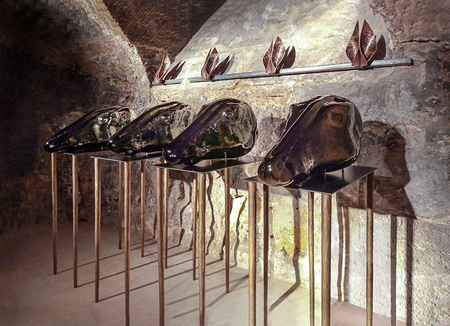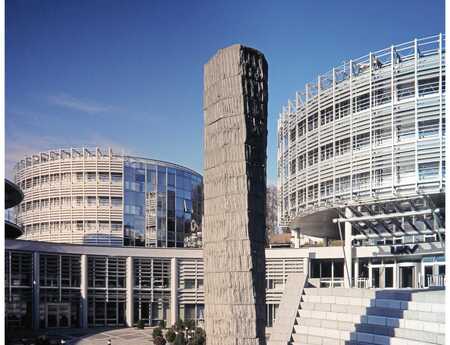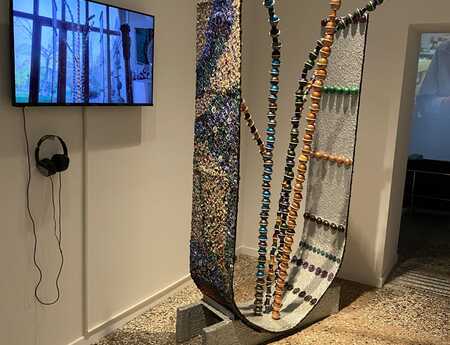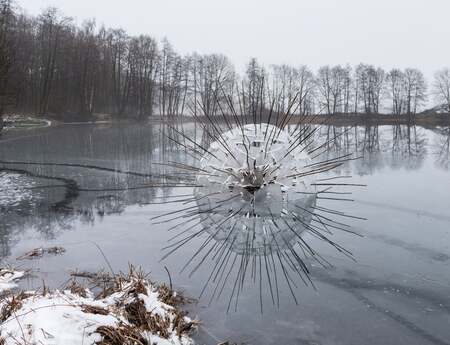The magic of the melting iron
The Online Club of July 4, 2022 was literally on fire!
In the evening, our three presenters gave 40 interested parties an insight into an almost cult-like festival dedicated to the element of fire, materials and creative processes – namely, the ICCCIA, the international conference on contemporary cast iron art, the 9th edition of which will take place from the 16th to the 20th September in Berlin.
First, Susanne Roewer, member of sculpture network and curator of the ICCCIA in Berlin, presented her own artistic career and her work, followed by D. Lance Vickery, ICCCIA President and Jenny K. Hager, ICCCIA Vice President.
Susanne Roewer first studied materials science at the TU Bergakademie Freiberg before switching to sculpture and graphics at the Berlin University of the Arts. An exciting mixture that brings an enthusiasm for experimentation, her understanding of chance and a willingness to fail to her artistic practice. On the one hand, her works feed on her deep understanding and her fascination for the uniqueness and history of a wide variety of materials such as glass, bronze and iron, some of which she partly combines with one another. On the other hand, they are based on extensive research and observations on historical figures and events, on folk art and old fairy tales, but also on current socio-political discussions and events, which flow into her works with great artistic sensitivity and not without a certain conceptual wit.
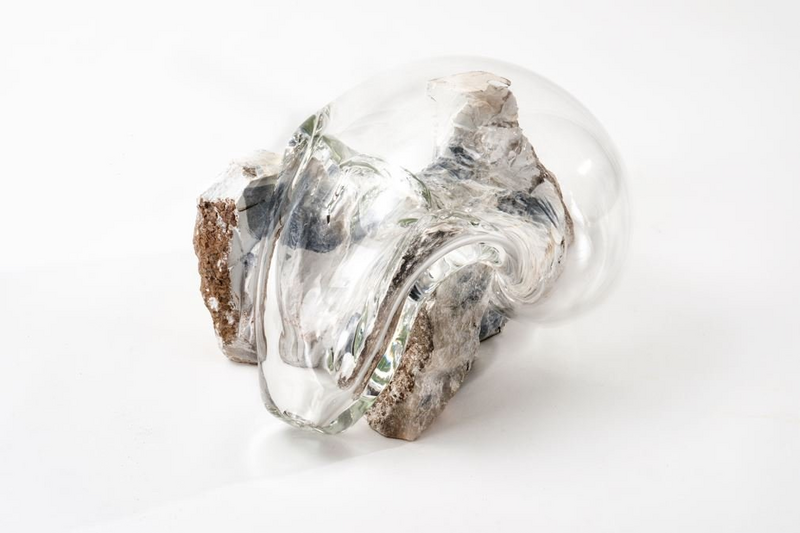
One example is the work Selfie between Litho & Atmo, 2017, in which softly flowing, clear glass together with angular, raw and dirty stone form an organic, form-fitting unit, but without actually being fixed to one another. The work symbolizes the character of the presentation of this online club, which is about the interplay between solid, clear forms and dust, heat and matter.
Susanne Roewer has considerable knowledge of all the classic techniques of sculpture through her training at the art academy. But she quickly realized that there was still more to be done.

It was ultimately a 'casting accident' that marked a pivotal moment for the artist when her design for a large sculpture was due to be cast in metal during a Scottish Sculpture Workshop. Cracks in the mold burst open and the liquid metal spurted out of the mold in an uncontrolled manner. A dangerous moment however, in which the artist, full of fascination, discovered fire as her element and decided to see the casting process less as a pure translation practice and more as a processual part of the artwork or as an art form in itself.

Working together and meeting a wide range of artists, including Coral Lambert and especially George Beasley during this workshop, marks another key moment that opened up completely new unconventional and artistically inspired casting methods for her.
These encounters also led to impressive collaborations, including, for example, the Elemental Attraction exhibition with George Beasley at the Fort Wayne Art Museum in Indiana in 2016.
Here, as part of a work by Beasley, on the day before the exhibition, a blast furnace was constructed from simple collected sticks of wood and mud, through which metal was then poured through bamboo tubes in a spectacular event of fire and sparks, before an enthusiastic audience. The participants held them pipes without any tools, only wrapped in protective clothing. An unimaginably direct interaction with the fire and the materials with a kind of burning sculpture, where the focus was not on the result, but the process itself becomes a performance. In these performances, the cast pieces were each X-crosses, which showed the dates of the cast in an old Irish script and thus also bore witness to the process itself.

Susanne Roewer then took part in other conferences on the art of casting, such as the International Sculpture Conference in Miami 2013, and the 7th ICCCIA, in Latvia 2014.
In Miami, the motif of the horse's head was created, a work that Susanne Roewer later developed further in glass with silver and which refers to the Quadriga atop the Brandenburg Gate in Berlin.
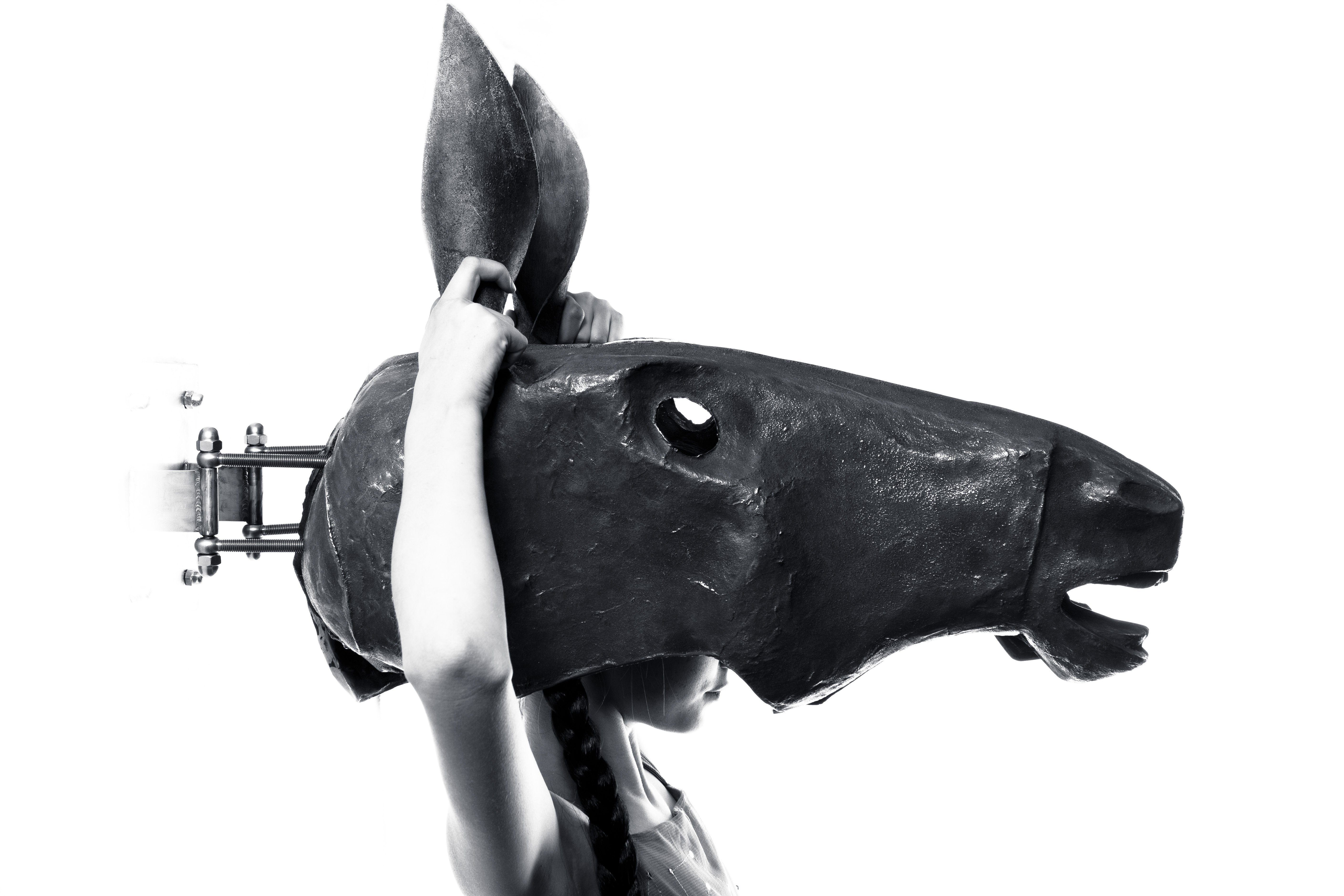
Left: Susanne Roewer, race with open end, casted at Miami ISC pour
Right: Susanne Roewer, Quadriga, glass and metal, 2022 as shown now on Veste-Coburg
The central element of all these events was the respective blast furnaces, which were created in collaboration with the artists, such as in Miami, where the artist Coral Lambert built a volcano-like furnace, the tip of which was crowned by a phoenix sculpture, accompanied by performances and choreographies by various artists.

At the 9th ICCCIA in Berlin, where Susanne Roewer is now the curator, the focus will also be on collaboration between a wide variety of artists, the community spirit and exchange of ideas.
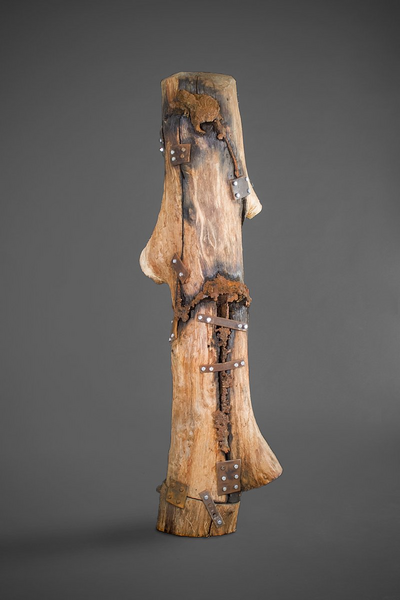
Following Susanne Roewer's impressive insight, D. Lance Vickery and Jenny K. Hager spoke about ICCCIA's mission and their own work. Both teach at the University of North Florida in Jacksonville and have been involved with ICCCIA for years and recently took the lead there. They are now working together with Susanne Roewer and Kurt Dyrhaug on the 9th ICCCIA in Berlin.
Since the first conference in 1988 at the Sloss Furnaces National Landmark in Birmingham, Alabama, the ICCCIA has taken place at different locations, most recently in Wales in 2010 and in Latvia in 2014.
The two described the goal of the ICCCIA as creating an international platform for the study and practice of contemporary cast iron sculpture and stimulating worldwide participation in the aesthetic, conceptual, cultural, historical and technical dialogue about contemporary cast iron art. Both described their first early contacts with cast iron art, their fascination and how they strive, also within their own teaching activities, to bring these techniques and the associated aspect of collaborative work closer to their students.

Through his acquaintance with the artists Charles Hook and George Beasley, D. Lance Vickery discovered his love for sculpture in the early 1990s at the second ICCCIA. The process and its performative beauty is important to him, but the focus is also on the result. His works deal with the interaction of the expression of the inner versus the outer. For a series of works, for example, he casts metal directly into logs. A challenging process in which the liquid metal finds its way through cracks and cuts and thus the material and the process inside become visible on the outside at the same time.
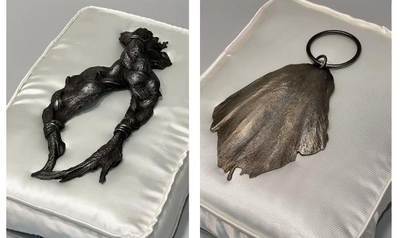
Jenny K. Hager first encountered cast iron art at the University of Kentucky. Interested in a variety of processes and materials, including steel, cast iron, video, wood, digital photography and found objects, she draws inspiration from dreams, childhood objects, gadgets, sea creatures and other curiosities. In her works, often large pieces of jewellery and feminine ornaments, and she deals with opposites such as industrial versus luxury, masculine versus feminine energy.
Her work finds particular appeal in the fascination for the flawed, the imperfect. For her objects, the artist often uses things that seem ‘uncastable’, such as her own hair or a turkey's wing, which she then presents as pieces of jewellery embedded in white satin.
Both described the community and collaborative process as one of the central aspects of cast iron art. And the excitement was palpable. All the more so as at the end of the presentation they showed some videos from past conferences, in which it became clear that this is by no means 'just' about exchanging techniques and the production of works of art, but about making the process into art, into a kind of art happening. It's about freeing the old technology, showing that anything is possible and doable. And it's about working together, looking for an exchange of ideas. As unique as each artist is and remains in their resulting works and their share in the joint events, they are all united by the fascination and enthusiasm for this art on fire.
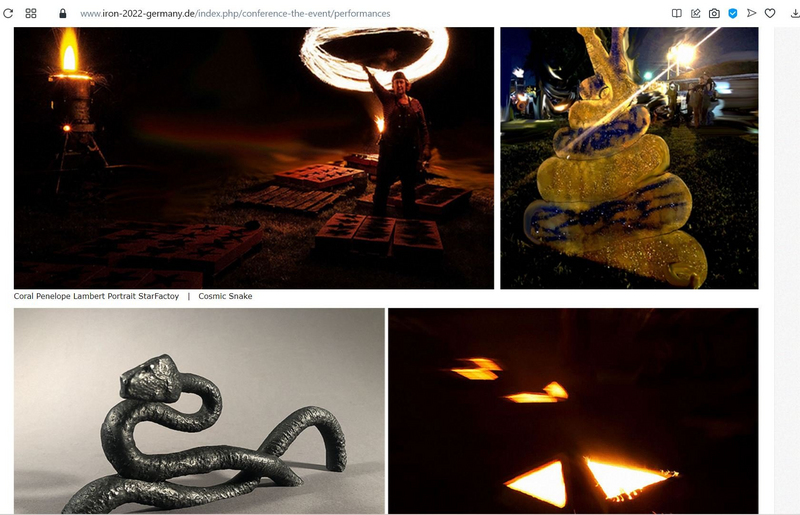
Everyone is invited to take part in the 9th ICCCIA in Berlin, whether as a visitor, observer or active participant. The program includes 10 exhibitions alone, including the so-called Kleine Eisen Show where registered participants can present small-format metal works. Furthermore, there will be various workshops, demonstrations, theoretical lectures and discussions and of course performances.
Extensive information about the ICCCIA in general, as well as about the Berlin Edition, its program and the possibility to register can be found on the following two pages:
https://www.icccia.org/
https://www.iron-2022-germany.de/
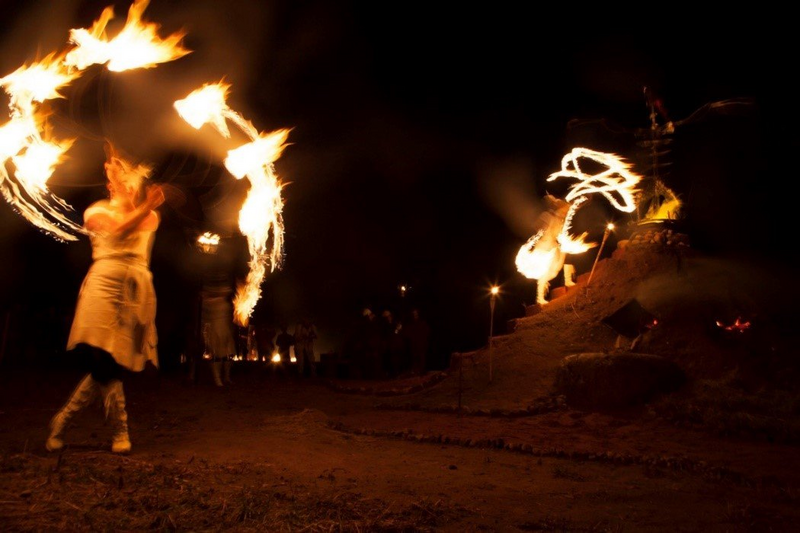
Register quickly and let yourself be infected by the fascination!

Author: Julia Weiss
Julia is an art historian from Munich. She has been working for sculpture network since April 2022.
Translation: John Hamilton
Cover picture: Vulcano Furnace Performance Coral Lambert at the 7th ICCCIA in Pedvale, Latvia

